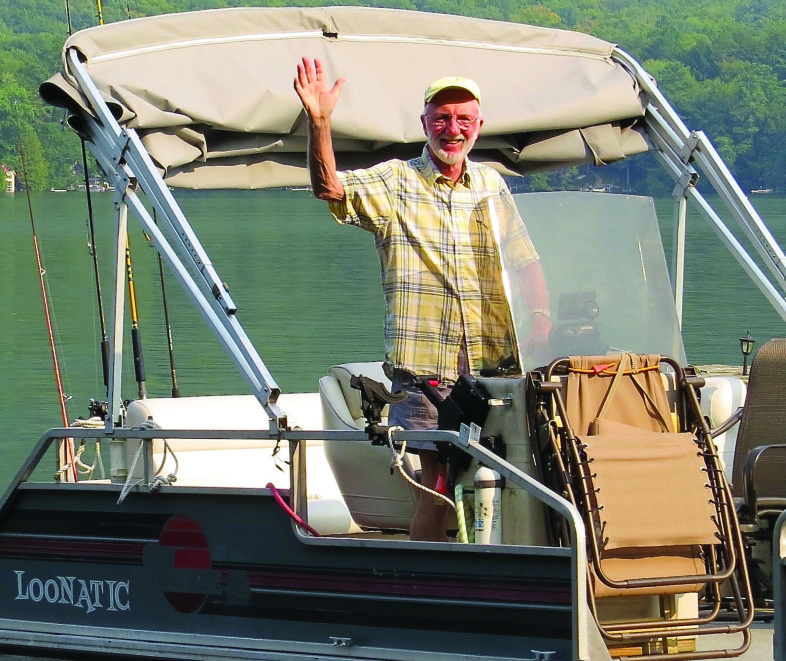This year VCE honors Mike Korkuc with the Julie Nicholson Citizen Science Award for his years of dedication to loon conservation. The Julie Nicholson Citizen Scientist Award honors Julie’s extraordinary passion and commitment to birds and wildlife conservation through her many years of tireless work as a citizen scientist. It is given annually to an individual who exemplifies Julie’s dedication to the cause of citizen science and conservation.
We asked Mike share a bit about himself and how he got involved in loon conservation.
Growing up in southeast Massachusetts, I was always an outdoors kid. My father was an avid fisherman and hunter who taught me enough that I was comfortable fishing by myself at an early age. I was hunting from the time I could get a license. Any thoughts of conservation I may have had would have been directed solely at protecting the things I could eat. I could in no way have been described as a “bird person.”
My first loon encounter was during a hunting trip in Maine. While camped on a small lake, I awakened in the middle of the night to the wail of a loon. I had no idea what was making that haunting sound. After being told, then searching unsuccessfully for a glimpse, I came to learn that I would hear a lot more loons in my life than I would ever see.
Fast-forward 20 years to a three-season camp on Lake Dunmore. I hadn’t thought about loons at all during those intervening years; I don’t remember seeing any either. Then, in 1985, an adult loon popped up about 30 feet from us at the camp. I remember pointing and exclaiming “Wow, that’s a loon!” At the time, that statement summed up my total knowledge about the species.
For many years I noticed loons passing through during migration but never considered those fleeting encounters a call to action. That all changed in 2007 when my neighbors and I discovered a loon pair and their chick floating dangerously close to boat traffic. We shifted into protective grandparent mode, circled the boats, and warned people away as we handed out educational material provided by VCE’s Loon Biologist, Eric Hanson. We floated with those loons for hours, and “our” chick survived. Soon after, we started planning for the following season. With Eric’s guidance, we installed loon nesting sign buoys and stationed volunteers nearby to educate boaters. Our vigilance continues today, and we’re proud that over eight years, Lake Dunmore has supported seven loon nests, six of them successful, and eight chicks that have survived to migrate in late fall.
In addition, we monitor four nearby lakes, and were thrilled when a new loon pair nested last year on Silver Lake. We placed a nesting raft on the lake to compensate for the lake’s fluctuating water levels, and the pair used it successfully. The loons chose not to reuse the raft this year, instead nesting on the shoreline. Despite heavy rains in June, Green Mountain Power stabilized water levels below the nest, allowing the loons a second successful year.
The email list I started in 2007 to coordinate efforts between the original volunteers continues today, but has grown to 275 people—all sharing a love of loons. Mailings are often daily during nesting season, and though less frequent in the off-season, continue all year long.
My photographs of that first chick sparked my new hobby. I’ve since captured over 40,000 photos, most of loons, and most not very good. I share these photos in mailings to fellow volunteers, and also include photos from others who are kind enough to share their best images.
I never really “volunteered” for this; my involvement just happened. Rosie, my significant other, deserves special mention—not only for her active help, but for her support of the many hours I devote to the loons. I truly appreciate every email or phone update on the loons, the ten sharp sets of eyes that come out for LoonWatch each July, and especially everyone’s help with signs and rafts. Thanks to the efforts of so many, loons on Lake Dunmore and Silver Lake now face a bright future.


Wonderful backstory,Mike. Congratulations.